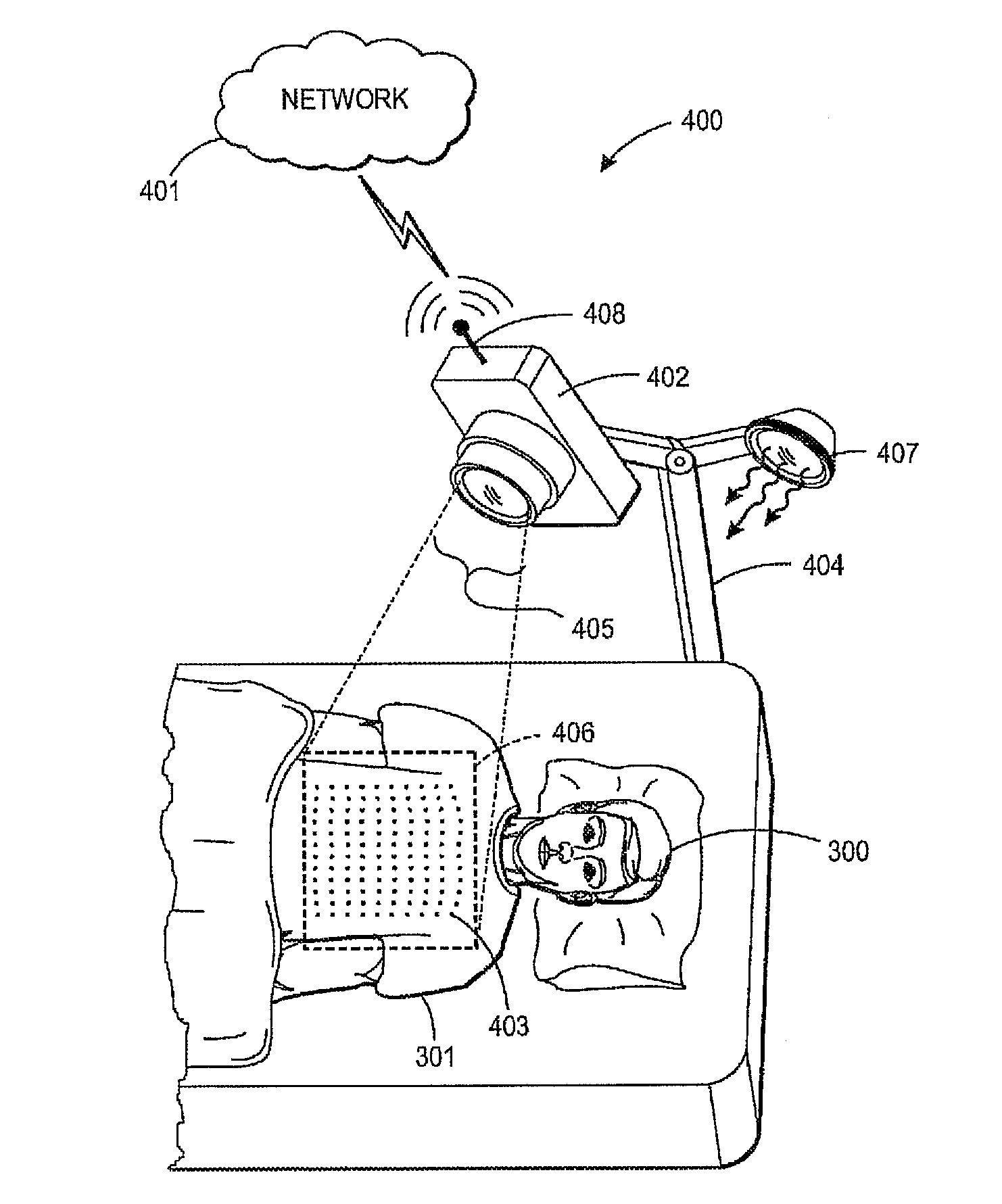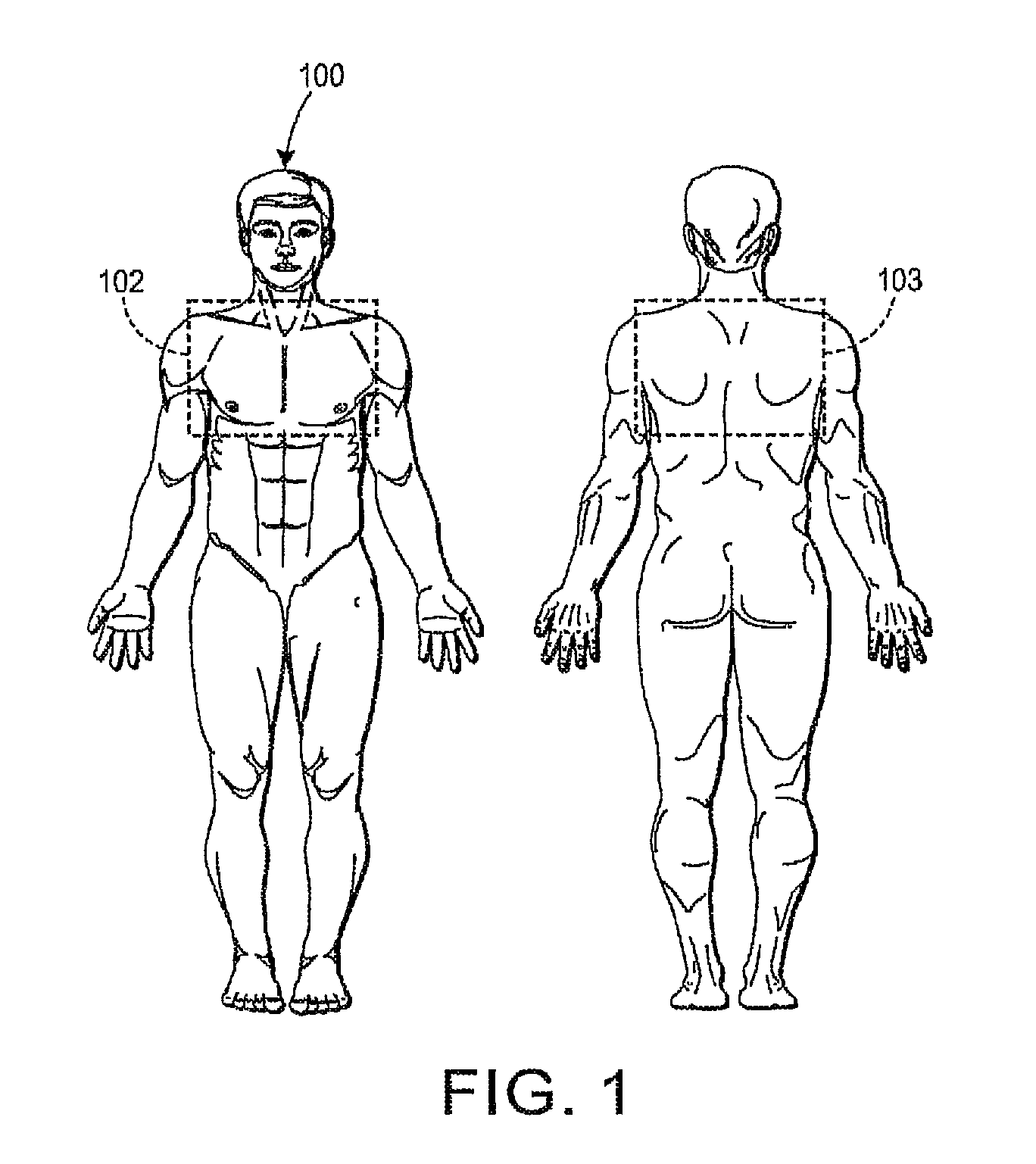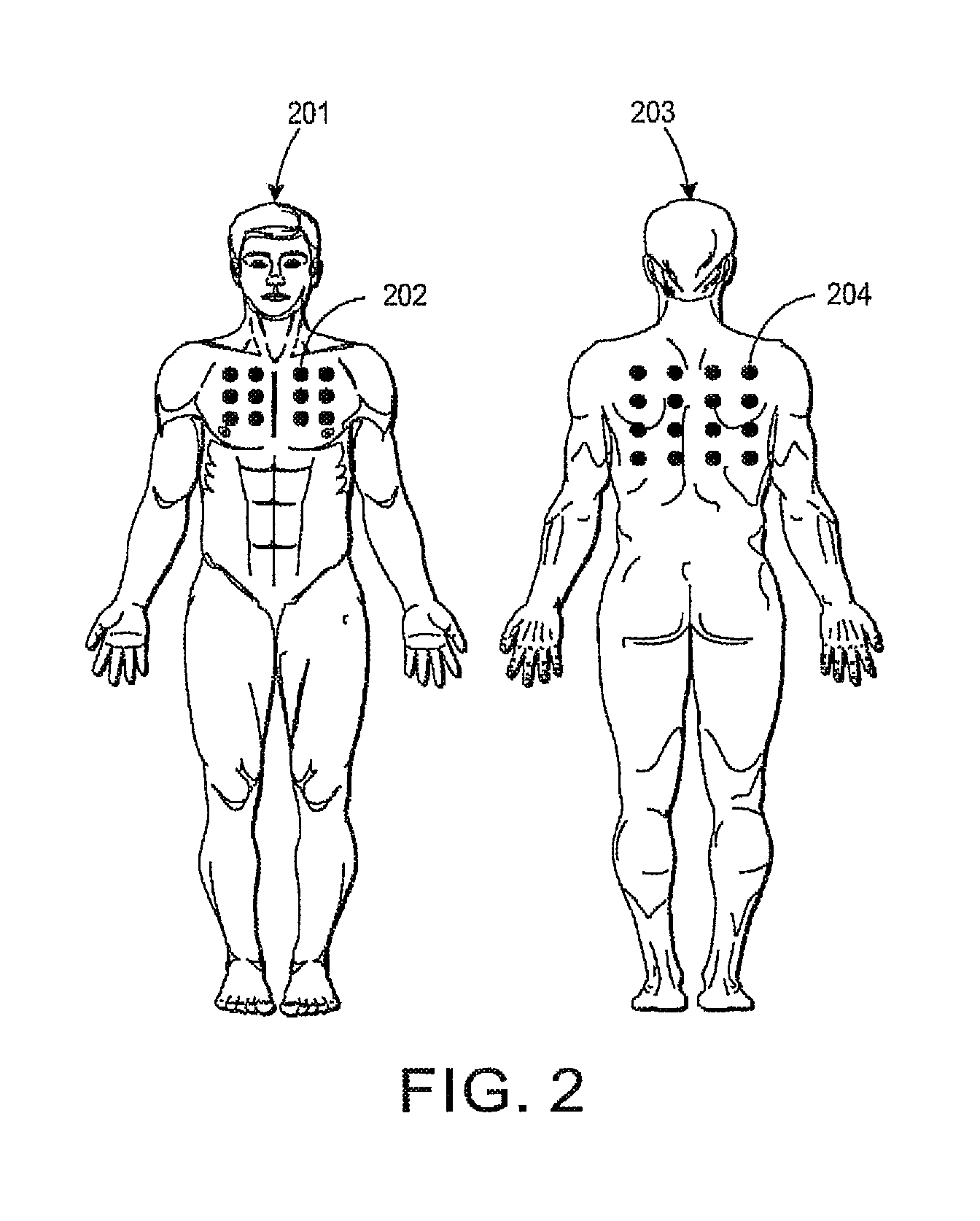Breathing pattern identification for respiratory function assessment
a technology of respiratory function and breathing pattern, which is applied in the field of breathing pattern identification for respiratory function assessment, can solve the problems of patient discomfort, dependency, loss of dignity, and further failure, and achieve the effects of reducing the risk of adverse effects of contact sensor monitoring on elderly patients and neonatal infants
- Summary
- Abstract
- Description
- Claims
- Application Information
AI Technical Summary
Benefits of technology
Problems solved by technology
Method used
Image
Examples
example breathing
Patterns
[0073]FIG. 8 shows an example breathing pattern associated with normal breathing (Eupnea) as observed normally under resting conditions.
[0074]FIG. 9 shows an example Bradypnea breathing pattern which is characterized by an unusually slow rate of breathing. Bradypnea is typically characterized by a period of respiration less than 12 breaths per minute (bpm) for patients in the range of between 12 and 50 years of age. Rates of breathing differ for older adults as well as younger patients. If an individual has this type of breathing, it can mean that the individual is not receiving a proper amount of oxygen.
[0075]FIG. 10 shows an example Tachypnea breathing pattern characterized by an unusually fast respiratory rate typically greater than 20 breaths per minute (bpm). Tachypnea can be associated with high fever when the body attempts to rid itself of excess heat. The rate of respiration increases at a ratio of about eight breaths per minute for every degree Celsius above normal....
PUM
 Login to View More
Login to View More Abstract
Description
Claims
Application Information
 Login to View More
Login to View More - R&D
- Intellectual Property
- Life Sciences
- Materials
- Tech Scout
- Unparalleled Data Quality
- Higher Quality Content
- 60% Fewer Hallucinations
Browse by: Latest US Patents, China's latest patents, Technical Efficacy Thesaurus, Application Domain, Technology Topic, Popular Technical Reports.
© 2025 PatSnap. All rights reserved.Legal|Privacy policy|Modern Slavery Act Transparency Statement|Sitemap|About US| Contact US: help@patsnap.com



